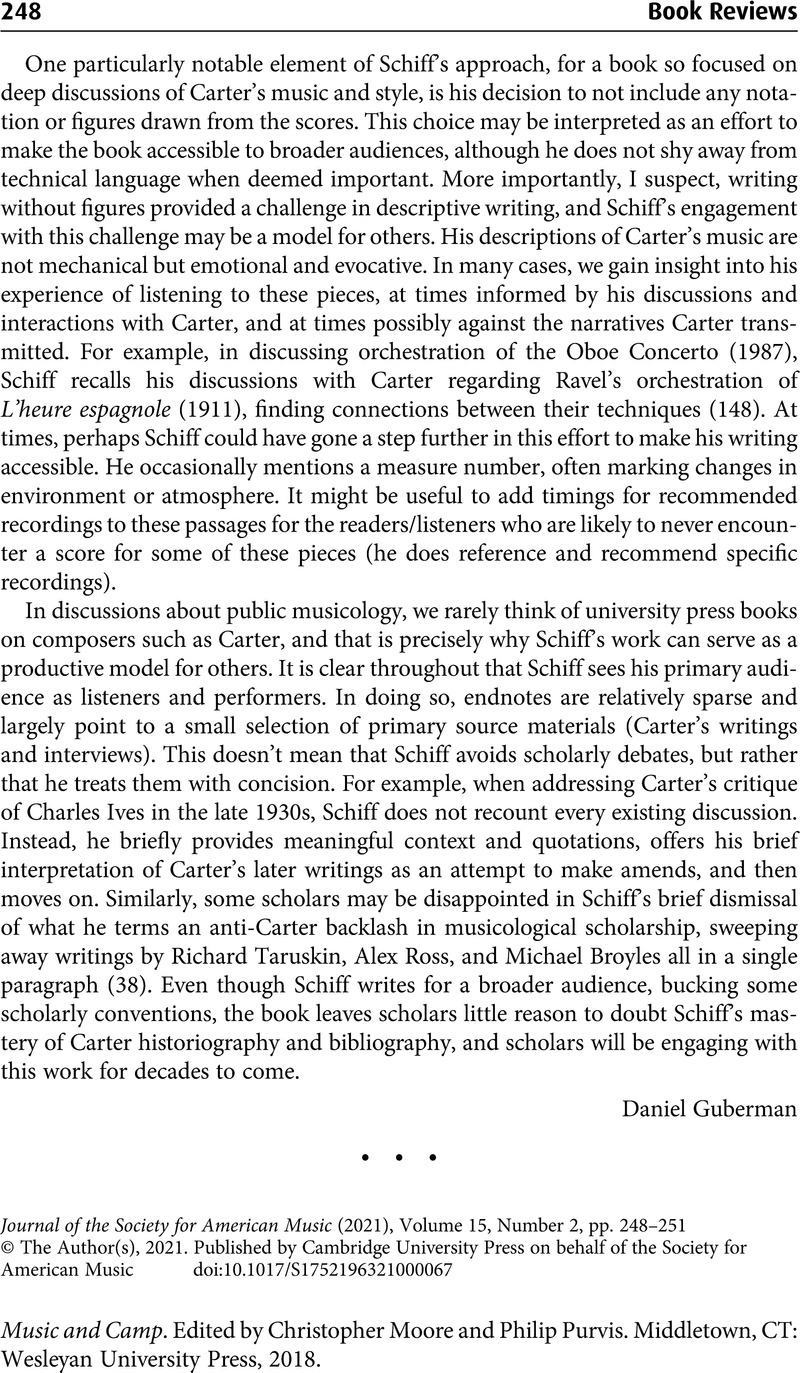No CrossRef data available.
Published online by Cambridge University Press: 04 May 2021

1 Sontag, Susan, “Notes on Camp,” Partisan Review 31, no. 4 (1964): 515–30Google Scholar, repr. in Camp: Queer Aesthetics and the Performing Subject—A Reader, ed. Fabio Cleto (Ann Arbor: University of Michigan Press, 1999), 53–65. Emphasis added.
2 Gould, Deborah, Moving Politics: Emotion and ACT UP's Fight Against AIDS (Chicago: University of Chicago Press, 2009), 3CrossRefGoogle Scholar.
3 Lorde, Audre, “The Uses of the Erotic as Power,” Sister Outsider: Essays and Speeches (Berkeley: Crossing Press, 2007), 53–59Google Scholar.
4 Sontag, “Notes,” 62.
5 For more on music and camp, see Cohan, Steven, Incongruous Entertainment: Camp, Cultural Value, and the MGM Musical (Durham, NC: Duke University Press, 2005)Google Scholar; Jones, Matthew J., “‘Enough of Being Basely Tearful’: ‘Glitter and Be Gay’ and the Camp Politics of Queer Resistance,” Journal of the Society for American Music 10, no. 4 (2016): 422–45CrossRefGoogle Scholar; Moore, Christopher, “Camp in Francis Poulenc's Early Ballets,” Musical Quarterly 95, nos. 2–3 (2012): 299–342CrossRefGoogle Scholar; Morris, Mitchell, “Reading as an Opera Queen,” in Musicology and Difference: Gender and Sexuality in Music Scholarship, ed. Solie, Ruth (Berkeley: University of California Press, 1995), 184–200Google Scholar; Peraino, Judith, Listening to the Sirens: Musical Technologies of Queer Identity from Homer to Hedwig (Berkeley: University of California Press, 2006)CrossRefGoogle Scholar; Koestenbaum, Wayne, The Queen's Throat: Opera, Homosexuality, and the Mystery of Desire (New York: Vintage, 1993)Google Scholar.
6 Sontag, “Notes on Camp,” 56–65. See “Notes” 10, 34, 41, and 54.